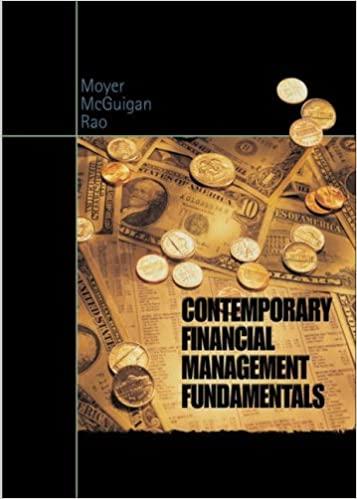Question
Suppose a hedge fund invests in a set of very illiquid stocks (which may not even be publicly traded). Because the stocks are illiquid, their
Suppose a hedge fund invests in a set of very illiquid stocks (which may not even be publicly traded). Because the stocks are illiquid, their price is only observed 15 days af- ter the end of every month. But, they are pretty highly correlated with the stock market other- wise. Finally, because they are illiquid, investors demand a an average risk premium of 0.2% per month.
Also assume that the stock market is ecient, so that Rm,t and Rm,t1 are statistically indepen- dent. That is, E[Rm,t|Rm,t1] = E[Rm,t]. Suppose E[Rm,t] = 1% and V ar(Rm,t) = m2 = 2%, and that Rm,t is i.i.d for all t. Assume the risk free rate is 0.1%.
Putting all this information together (and waving our hands a little), we can infer the return to the hedge fund is given by:
Rt,HF = 0.5Rm,t + 0.5Rm,t1 + 0.2 + t, (1) where t has mean zero and standard deviation , and cov(t, Rm,t) = cov(t, Rm,t1) = 0.
(a) What is the CAPM beta of HF? What is it's alpha? (b) Is your answer to part (a) a good representation of the fund's true risk exposure to the mar-
ket? If not, what could you do to calculate the true market risk exposure?
Step by Step Solution
There are 3 Steps involved in it
Step: 1

Get Instant Access to Expert-Tailored Solutions
See step-by-step solutions with expert insights and AI powered tools for academic success
Step: 2

Step: 3

Ace Your Homework with AI
Get the answers you need in no time with our AI-driven, step-by-step assistance
Get Started


